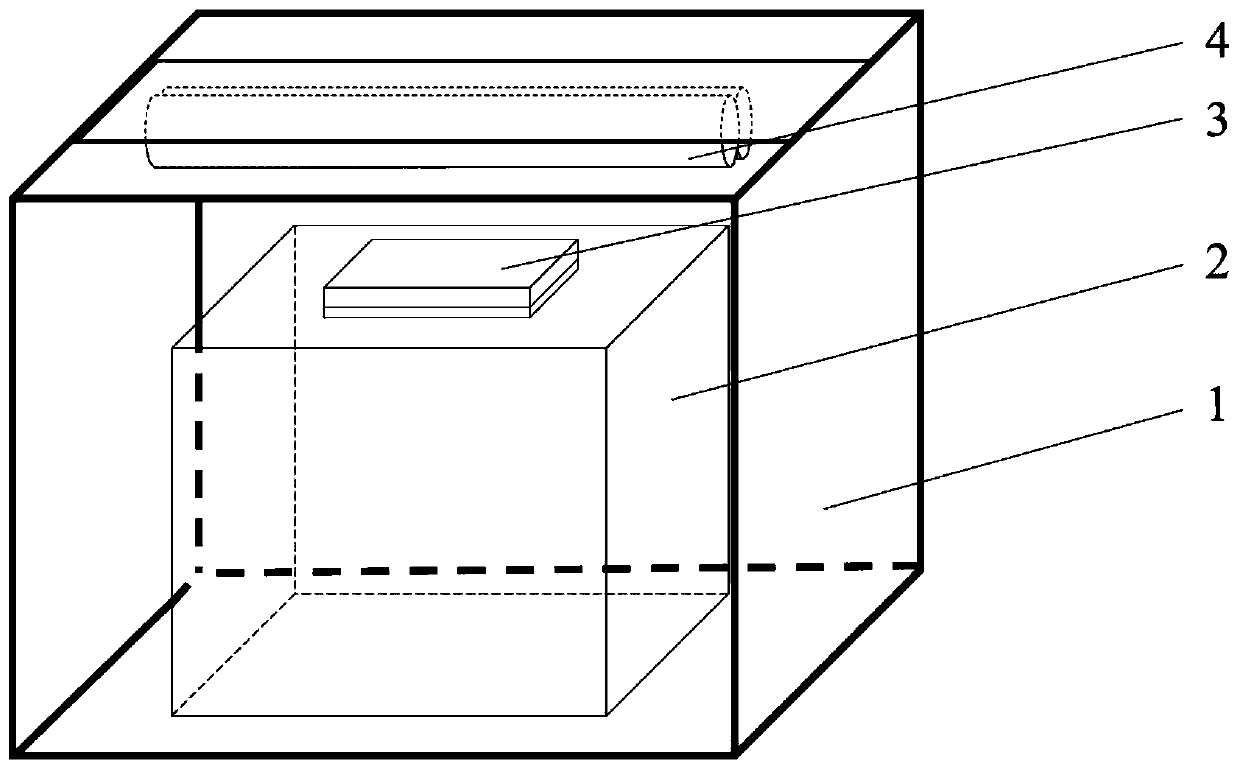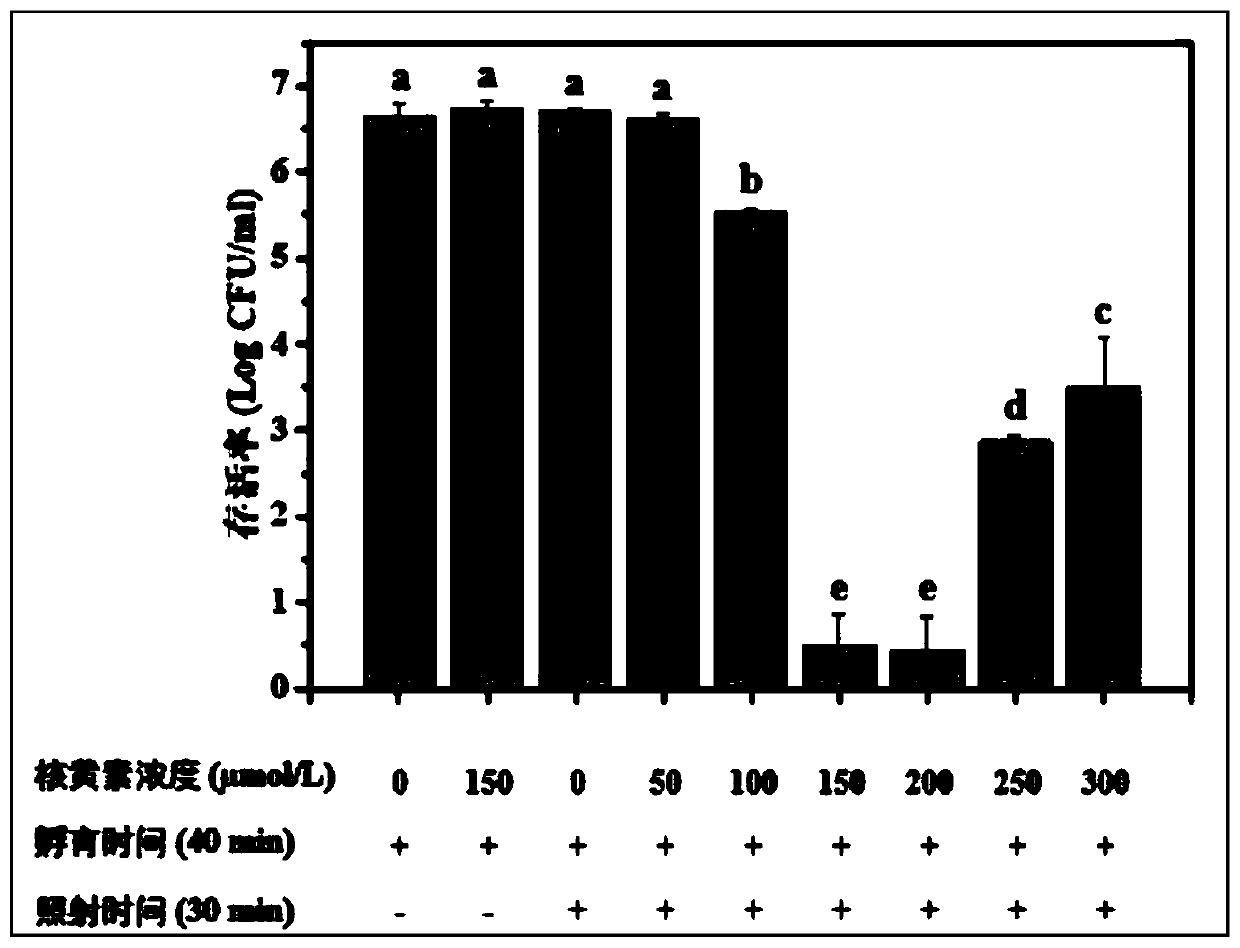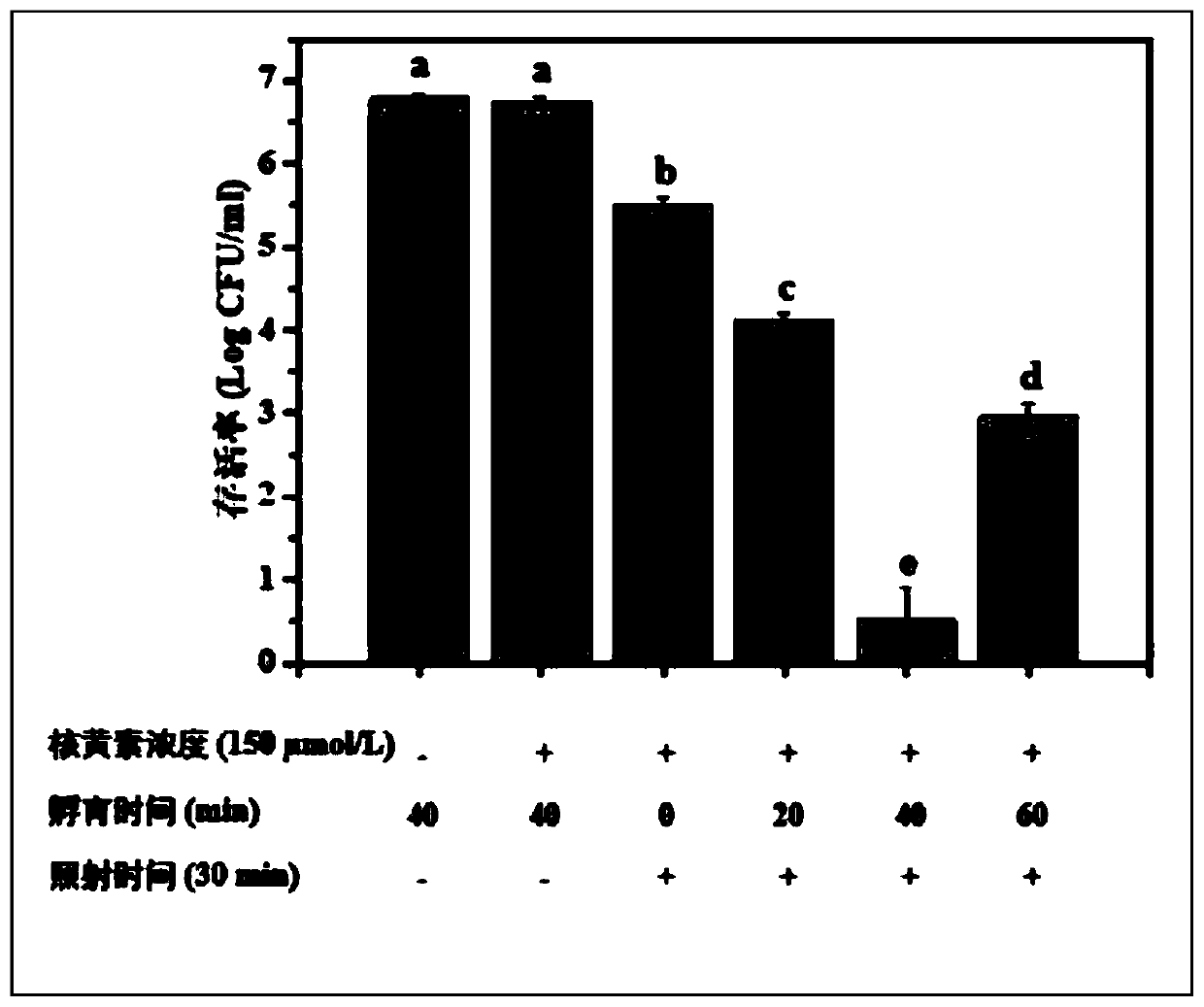Method for killing salmonellas through photodynamics
A Salmonella, photodynamic technology, applied in the direction of egg preservation, egg preservation through radiation/electrical treatment, food science, etc., to achieve the effect of cost-free pollution, significant effect, and simple operation
- Summary
- Abstract
- Description
- Claims
- Application Information
AI Technical Summary
Problems solved by technology
Method used
Image
Examples
preparation example Construction
[0044] Preparation of Salmonella Bacteria Liquid
[0045] The Salmonella species used in the examples are Salmonella typhi CICC 21484 and Salmonella enteritidis CMCC 50041, respectively. Among them, Salmonella typhimurium CICC 21484 was purchased from China Center of Industrial Culture Collection (CICC); Salmonella enteritidis CMCC 50041 was purchased from China Medical Culture Collection (CMCC) .
[0046] Preparation method of Salmonella bacterial liquid: take the standard strains CICC 21484 and CMCC50041 stored in glycerol tubes stored at -80°C and inoculate them by streaking on bismuth sulfite agar plates, and culture them statically at 37°C for 24-48 hours. Single colonies were picked and placed in 9mL TSB test tubes, and cultured in a shaker at 37°C with a rotation speed of 180r / min for 13h to obtain the bacterial culture solution in the initial stage of stability. Mix the same amount of two Salmonella culture solutions in a centrifuge tube, centrifuge for 5 minutes (4°...
Embodiment 1
[0063] Effect of different riboflavin concentrations on the effect of photodynamic killing of Salmonella
[0064] The experiment was carried out according to the above method of photodynamic treatment of Salmonella, wherein the concentration of riboflavin solution in the mixed system of the sample to be treated was 0 μmol / L, 50 μmol / L, 100 μmol / L, 150 μmol / L, 200 μmol / L, 250 μmol / L L, 300 μmol / L; dark incubation time is 40 minutes; LED blue light source irradiation time is 30 minutes. figure 2 The inactivation of Salmonella after treatment with different concentrations of riboflavin is shown in .
[0065] The initial inoculum of Salmonella in the system was about 4.5×10 6 CFU / mL, when the incubation time is 40min, the light time is 30min, when the riboflavin concentration is 100, 150, and 200μmol / L, the amount of Salmonella can be reduced by 1.12, 6.14, and 6.21Log CFU / mL, of which riboflavin When the concentration was 150μmol / L and 200μmol / L, the lethality rate of Salmonel...
Embodiment 2
[0068] Effect of different incubation times on the effect of photodynamic killing of Salmonella
[0069] The experiment was carried out according to the above method of photodynamic treatment of Salmonella, wherein: the concentration of riboflavin in the mixed system was 150 μmol / L, the incubation time was 0 min, 20 min, 40 min, and 60 min, respectively; the irradiation time of the LED blue light source was 30 min. Such as image 3 As shown, as the incubation time increases, the killing effect on Salmonella also increases, and when the incubation time is 40min, the lethality rate of Salmonella is 99.99993%. The incubation time is too long will also affect the bactericidal effect. Therefore, it is necessary to choose an appropriate incubation time to have a better killing effect on Salmonella.
[0070] Two groups of control experiments were set up according to the above-mentioned method of photodynamic treatment of Salmonella. The irradiation time of one group of LED blue li...
PUM
 Login to View More
Login to View More Abstract
Description
Claims
Application Information
 Login to View More
Login to View More - R&D
- Intellectual Property
- Life Sciences
- Materials
- Tech Scout
- Unparalleled Data Quality
- Higher Quality Content
- 60% Fewer Hallucinations
Browse by: Latest US Patents, China's latest patents, Technical Efficacy Thesaurus, Application Domain, Technology Topic, Popular Technical Reports.
© 2025 PatSnap. All rights reserved.Legal|Privacy policy|Modern Slavery Act Transparency Statement|Sitemap|About US| Contact US: help@patsnap.com



